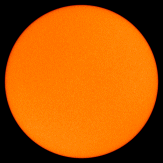Advertisement
If you have a new account but are having problems posting or verifying your account, please email us on hello@boards.ie for help. Thanks :)
Hello all! Please ensure that you are posting a new thread or question in the appropriate forum. The Feedback forum is overwhelmed with questions that are having to be moved elsewhere. If you need help to verify your account contact hello@boards.ie
Hi there,
There is an issue with role permissions that is being worked on at the moment.
If you are having trouble with access or permissions on regional forums please post here to get access: https://www.boards.ie/discussion/2058365403/you-do-not-have-permission-for-that#latest
There is an issue with role permissions that is being worked on at the moment.
If you are having trouble with access or permissions on regional forums please post here to get access: https://www.boards.ie/discussion/2058365403/you-do-not-have-permission-for-that#latest
The sun is dead!! Mini iceage???
Comments
-
-
-
-
-
-
-
-
-
-
Advertisement
-
-
-
-
-
-
-
Advertisement
-
-
-
-
-
-
Advertisement
-
-
-
-
-
-
-
-
-
-
-
Advertisement
-
-
-
-
-
-
-
-
-
-
Advertisement
-
-
-
-
-
-
-
Advertisement
-
-
-
-
-
-
Advertisement
Advertisement












 Past studies have shown that sunspot numbers correspond to warming or cooling trends. The twentieth century has featured heightened activity, indicating a warming trend. (Source: Wikimedia Commons)
Past studies have shown that sunspot numbers correspond to warming or cooling trends. The twentieth century has featured heightened activity, indicating a warming trend. (Source: Wikimedia Commons) Solar activity has shown a major spike in the twentieth century, corresponding to global warming. This cyclic variation was acknowledged by a recent NASA study, which reviewed a great deal of past climate data. (Source: Wikimedia Commons)
Solar activity has shown a major spike in the twentieth century, corresponding to global warming. This cyclic variation was acknowledged by a recent NASA study, which reviewed a great deal of past climate data. (Source: Wikimedia Commons)





 From john-daly.com
From john-daly.com
